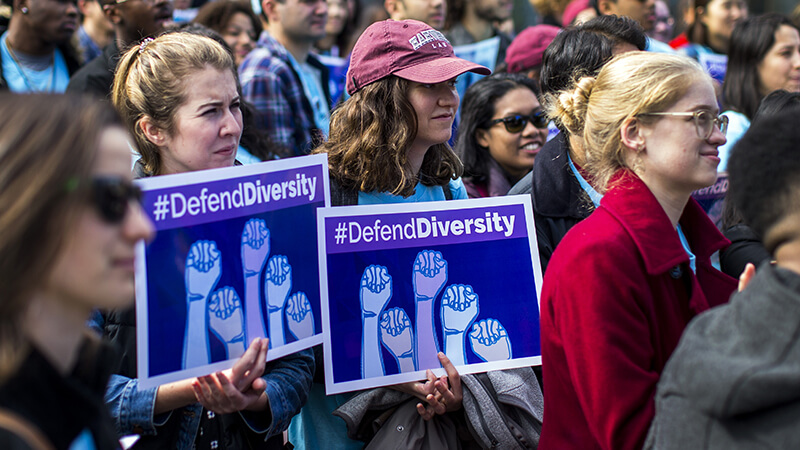The U.S. Supreme Court decision limiting the use of race in college admissions may not be a total surprise, but it is still a slap of hard truth about the long road ahead for those who respect and understand the benefits of a more diverse and just postsecondary educational system.
It’s hard not to see the larger picture leading us here—which includes the assault on fairness and racial diversity already embedded in decisions by nine states to ban the consideration of race in the admissions processes at highly selective institutions. Colleges that take race into consideration only use it as one data point in a holistic approach that includes test scores, grades, and interests outside the classroom. Given that, in the most charitable assessment, these cases before the Supreme Court and the laws elsewhere are an overreaction, a solution in search of a problem.
The larger picture includes the advance of anti-equity legislation that is passing or moving forward in areas across the country. Whether those laws are enforceable or not is not really the issue, as much as they reflect the real intent of placing a chilling effect on organizations pursuing equality in America.
The decision is wrong. Considering race in admissions promotes fairness in higher education and has helped all of us by preparing our students for a more diverse, multicultural society. Promoting racial equity in higher education also helps to redress disadvantage and barriers imposed upon people of color seeking a college education. We already had a rigorous legal standard for race-conscious admissions, which was settled law for over four decades. The court’s decision will almost certainly provoke further legal cases to establish the boundaries for institutions in promoting diversity. That could further limit racial equity policies if institutions become overly cautious in the face of legal uncertainty.
This hurts everyone. Although this case is solely about admissions at highly selective colleges and universities, many other institutional leaders have been preparing for the potential ripple effects, which experience shows will reduce racial diversity on campuses. Even for schools that are not affected, the ruling sends the wrong message to students and the world about our national commitment to progress.
We’re not stopping. This is a big step backward in a long journey toward a more fair society. We all know that racial equity is just as important today as it has ever been. Now more than ever, we need to redouble our efforts to achieve this goal. That means talking about the strategies we should be pursuing, the things we should do—and the things we should protect against, going forward. This ruling could have far broader implications for higher education beyond admissions, and we need to know much more about those.
We also need to help others understand the facts around race and opportunity in education. Many people believe incorrectly that considering race in admissions means less qualified people are admitted or that there are quotas regarding who must be admitted. In fact, competitive admissions systems are not about giving advantages to less-qualified people. They’re used to decide who, among equally qualified people, should be admitted.
Clearly, today’s rulings show that we must do more to help people understand the benefits of racial diversity on college campuses—learning to work with people with different life experiences. We must focus our efforts to make the case—not only for fairness on campus, but for the critical role of higher education in society.
As major employers argued to the Court, “Acknowledging, supporting, and promoting the benefits of diversity—specifically including racial and ethnic diversity—among their workforces is essential to meet client needs, achieve business goals, and strengthen relationships both internally and with the communities [we] serve.”
Lumina stands with its partners and colleagues across the field of higher education: We recognize that the words and tactics some use may have to change, but our collective commitment to improving fairness and justice in higher education certainly will not.
Many of us feel a sense of sadness and dismay. But as we talk with friends and partners, it is heartening to hear a solid sense of determination. Despite what has happened here and the obstacles this will throw in our path, we cannot be deterred.
